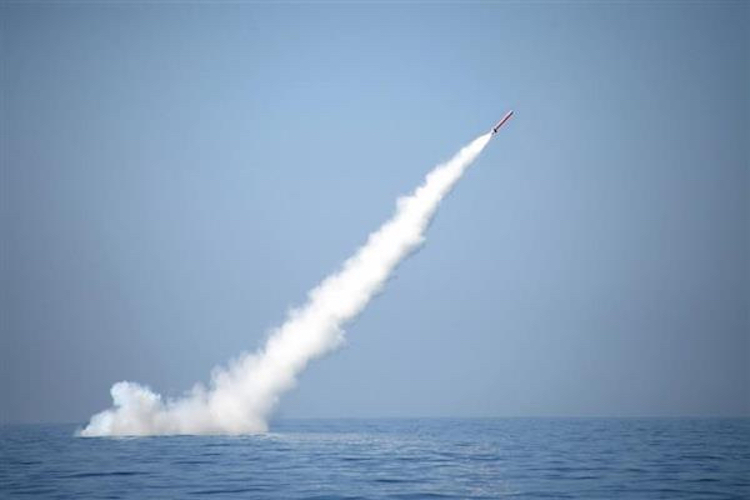New Nuclear Notebook: Pakistani Nuclear Forces, 2018

A Babur-3 dual-capable SLCM is test-launched from an underwater platform in the Indian Ocean on January 9, 2017.
By Hans M. Kristensen, Robert S. Norris, and Julia Diamond
The latest FAS Nuclear Notebook has been published in the Bulletin of the Atomic Scientists: Pakistani nuclear forces, 2018 (direct link to PDF). We estimate that Pakistan by now has accumulated an arsenal of 140-150 nuclear warheads for delivery by short- and medium-range ballistic and cruise missiles and aircraft.
This is an increase of about ten warheads compared with our estimate from last year and continues the pace of the gradual increase of Pakistan’s arsenal we have seen for the past couple of decades. The arsenal is now significantly bigger than the 60-80 warheads the U.S. Defense Intelligence Agency in 1999 initially estimated Pakistan might have by 2020. If the current trend continues, we estimate that the Pakistani nuclear warhead stockpile could potentially grow to 220-250 warheads by 2025.
The future development obviously depends on many factors, not least the Pakistani military believes the arsenal needs to continue to grow or level out at some point. Also important is how the Indian nuclear arsenal evolves.
The Pakistani government and officials initially described Pakistan’s posture as a “credible minimum deterrent” but with development of tactical nuclear weapons later began to characterize it as a “full spectrum deterrent.” Moreover, development is now underway to add a sea-based leg to its nuclear posture, and a flight test was conducted in 2017 of a ballistic missile that Pakistani officials said would be capable of carrying multiple warheads to overcome missile defense systems.
Additional information can be found here:
Satellite imagery of RAF Lakenheath reveals new construction of a security perimeter around ten protective aircraft shelters in the designated nuclear area, the latest measure in a series of upgrades as the base prepares for the ability to store U.S. nuclear weapons.
It will take consistent leadership and action to navigate the complex dangers in the region and to avoid what many analysts considered to be an increasingly possible outcome, a nuclear conflict in East Asia.
How the United States responds to China’s nuclear buildup will shape the global nuclear balance for the rest of the century.
The bootcamp brought more than two dozen next-generation open-source practitioners from across the United States to Washington DC, where they participated in interactive modules, group discussions, and hands-on sleuthing.